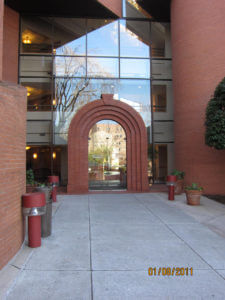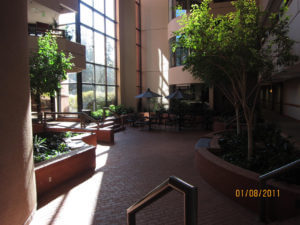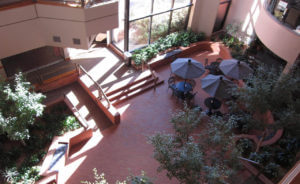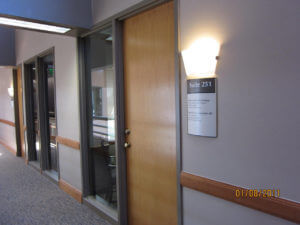Sleep disorders can be primary in which there is a defect in the sleep timing mechanism (sometimes called sleep architecture) called dyssomnias and by parasomnias which includes nightmare disorder. Sleep disorders may also arise from medical conditions, another psychological problem such as anxiety and/or depression or even induced by substance (Eg. alcohol).
One sleep disorder is a breathing-related disorder which can be caused by breathing obstruction or a process that interferes with oxygen exchange during sleep.
Nightmares can be a feature of the anxiety disorders, acute stress disorder and posttraumatic stress disorder. But there is a disorder called Nightmare Disorder that is one of the sleep disorders.
Nightmare disorder is a repeated (over nights) series of alarming dreams that lead to awakenings and full alertness from the individual during the night. This causes lack of effective sleep and social/ occupational dysfunction during the day. The most common components of such dreams are those involving danger to the individual (pursuit, harm, etc) or involving humiliation or shame. For many such patients, sleep avoidance leads to further impairment. There are sleep laboratories which can measure for such occurrences. This can begin in early childhood, and if unaddressed, persist through adulthood.
Primary insomnia is one of the dyssomnias and is characterized by difficulty initiating or maintaining sleep or having nonrestorative sleep in which the individual feels unrested. This results not only in daytime somnolence (fatigue) but can impair reasoning, judgment and mood. Additionally, this can result in appreciable health concerns including blood pressure changes. And the medications most often given for short term relief of sleep can complicate matters further since they tend to be habituating and not particularly effective when used over extended periods. It is also important to be certain that the primary cause is not a breathing related disorder, nightmare disorder or problems with mood disorder.
Primary hypersomnia is characterized by excessive somnolence (sleepiness) with prolonged periods of sleep and day time episodes of napping. This can result from a mood disorder such as major depressive disorder and needs to be differentiated from narcolepsy. There is always a concern that diet or medication intake be separated and determined not to be a factor in the excessive need for sleep. Such increased sleep invariably causes difficulty in occupational and social interaction since the drive for sleep exceeds the drive for achievement or interpersonal contact. Sleep centers ask for journals and perform polysomnography to measure the nature (architecture) and time periods of sleep.
Narcoloepsy is defined when there have been at least three months of sudden onset and irresistible sleep which can be characterized by cataplexy (sudden bilateral loss of muscle tone, most frequently in intensely emotional situations) and/or sudden sleep paralysis or hallucinations at the beginning (hypnogogic) or endings (hypnopompic) of sleep cycles. Such individuals find an irresistible urge for sleep often precipitated by an emotional event and will report either paralysis or hallucinations at the onset or closure of sleep. This differs from primary hypersomnia and often has a neurological basis and is not typically implicated with clinical depression.
Circadian Rhythm Sleep Disorder is most often divided into three major subtypes: a pattern of delayed sleep onset and then late awakening with inability to bring this into a normal pattern. This is called delayed sleep phase type. Threre is also jet lag type that which occurs in individuals who travel frequently across time zones as part of their work. Shift Work Type refers to individuals who are working during normal sleep cycle and attempting to force sleep during the normal waking hours. There is also what is referred to as unspecified type for sleep wake schedule disorders that arise as a resilt of other irregular sleep wake patterns.
Sleepwalking Disorder is diagnosed when an individual arises from bed, often during the first third of a major sleep episode, and walks about. The individual, during the episode, has a blank, often expressionless, face and may be unresponsive to others communicating although in some instances the sleep walking individual will verbalize. The individual is awakened with great difficulty and is amnestic for the event. Although 1-7% of the adult population may have had a sleepwalking episode, sleep walking disorder is less common. Investigations indicate that from 1/10 to 1/3 of children have had a sleepwalking episode. There has been some indication that breathing related sleep disorders and sleepwalking and between migraine headaches and sleepwalking.
Sleep Terror Disorder presents as someone awakening with signs of fear and shortness of breath, rapid heat beat and most often a scream of terror. Recall of the dream is not common with children although adolescents and adults may recall the dream content and this most often occurs in the first third of a sleep cycle. In adults this may be associated with other psychological problems, but in children, other problems are not as common. In children it usually subsides by adolescence. In adults, it most often occurs in early adulthood and is more likely to be chronic. It is also common for this to occur in families. These individuals are more likely to awaken/calm with difficulty in comparison to those with Nightmare Disorder who most often are easier to calm.
The first concern would be to insure that other problems are not the cause of these symptoms such as other disease or metabolic problem. Evaluation by the child’s pediatrician and psychologist would be the place to start.
Imsomnia or Hypersomnia related to Another Mental Disorder – Insomnia (inability to sleep) and hypersomnia (need for excessive sleep) associated with psychological problems such as major depressive disorder can account for almost half of the cases seen in sleep centers. Biploar disorder, anxiety disorders, panic disorder and other conditions can create problems with problems with sleep onset, sleep maintenance or the above mentioned hypersomnia. Such individuals may appear haggard during the day. Among many groups, it is more acceptable to discuss problems with sleep than problems with anxiety and mood.
Sleep Disorders Arising from Gneral Medical Condition – Insomnia (inability to sleep) and hypersomnia (need for excessive sleep) and parasomnia (abnormal behavior during sleep cycles) can allarise from physical disorders and conditions. There are degenerative neurological disorders such as Parkinson’s Disease, cerebral vascular disease caused by lesions to the upper brain stem, thyroid conditions, viral or bacterial infections, pulmonary diseases and muculoskeletal diseases which result in pain.
In any disease or illness state, the patient and the doctor need to look at both the psychological precursors and aftermath of the physical illness upon the individual as well as the impact of the illness itself upon physical functioning including sleep.
Substance Induced Sleep Disorder – as noted insomnia (inability to sleep) and hypersomnia (need for excessive sleep) and parasomnia (abnormal behavior during sleep cycles) can arise from prescrived medication or other drug taken and can result from the intoxication of the drug or from the withdrawal from the drug. These are not primary sleep disorders in that they would not occur if the individual were not taking the prescribed medication or other drug. The drugs used to treat anxiety (anxiolytic drugs) such as the benzodiazepines (Eg. Valium, Ativan, etc) and drugs that are used to treat pain (the narcotic analgesia like Percocet, Vicodin, Lorcet, etc) are know to disrupt sleep. And since withdrawal can extend over a long period of time, the sleep disorder may occur weeks after the cessation of the drug.





